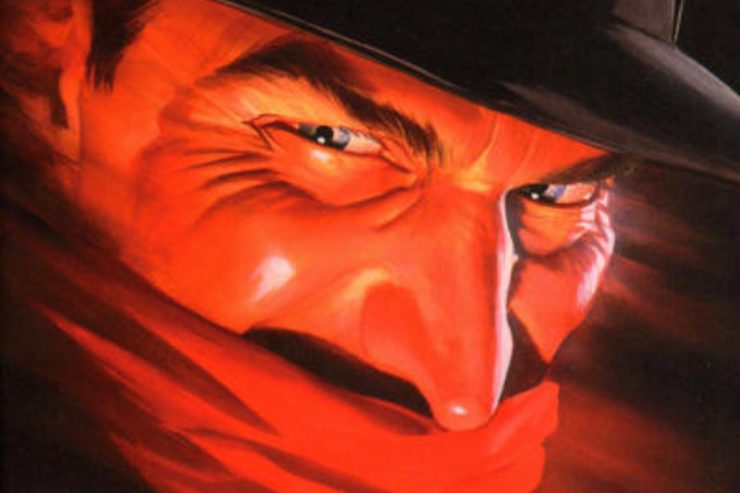Pulp magazines have had a profound effect on popular culture across the globe. Their stories and art have reverberated through a wide variety of media — comic books, movies, paperbacks, genre fiction, television, men’s adventure magazines, radio drama, video, anime, manga, and role-playing games.
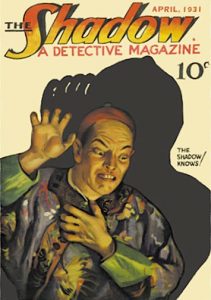 On March 6, 1931, THE SHADOW: A DETECTIVE MAGAZINE debuted on American newsstands. The first single character or hero pulp, The Shadow revived a fiction format that had disappeared with the demise of the dime novels and story papers. Author Walter B. Gibson refashioned The Shadow — the sinister narrator of CBS Radio’s THE DETECTIVE STORY HOUR — into the first pulp hero.
On March 6, 1931, THE SHADOW: A DETECTIVE MAGAZINE debuted on American newsstands. The first single character or hero pulp, The Shadow revived a fiction format that had disappeared with the demise of the dime novels and story papers. Author Walter B. Gibson refashioned The Shadow — the sinister narrator of CBS Radio’s THE DETECTIVE STORY HOUR — into the first pulp hero.
Gibson’s character was a dark and mysterious crime-busting super-sleuth who embodied the iconic power of classic villains like Dracula. The Shadow served as the template for other hero pulps and, later, scores of comic book superheroes. Gibson and his occasional fill-in, Theodore Tinsley, also introduced the concept of super-crooks and super-crime.
Lasting 325 issues and spanning eighteen years, THE SHADOW pulp was canceled in 1949. However, Gibson’s and Tinsley’s character had left his mark on popular culture. The Shadow would travel full circle to his beginnings and become a long-running radio program. The series premiered in late September 1937 over the Mutual Broadcasting System, featuring Orson Welles as the mystery man. Other actors would follow the famed actor and director in the role.
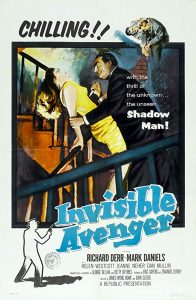 One month after The Shadow debuted on radio, the first of two movie serials appeared. THE SHADOW STRIKES starred Rod La Rocque and was based on a pulp novel by Walter Gibson. In 1946, Monogram Pictures released three Shadow movies starring Kane Richmond. 1958 would see Republic Pictures release INVISIBLE AVENGER, a theatrical film culled from two episodes of a pilot for a Shadow television series. Universal Pictures would release another Shadow film in 1994 starring Alec Baldwin as the title character.
One month after The Shadow debuted on radio, the first of two movie serials appeared. THE SHADOW STRIKES starred Rod La Rocque and was based on a pulp novel by Walter Gibson. In 1946, Monogram Pictures released three Shadow movies starring Kane Richmond. 1958 would see Republic Pictures release INVISIBLE AVENGER, a theatrical film culled from two episodes of a pilot for a Shadow television series. Universal Pictures would release another Shadow film in 1994 starring Alec Baldwin as the title character.
Concurrent to the original pulp series, The Shadow also began appearing in books. Street & Smith got the ball rolling with three hardcovers in their “Ideal Library.” First came THE LIVING SHADOW in 1932, reprinting the initial entry of the pulp series. Whitman Publishing followed with three “Better Little Books” featuring the character.
In 1941, LA Bantam published THE SHADOW AND THE VOICE OF MURDER, the first Shadow paperback. It was a reprint of a Walter B. Gibson pulp novel. Belmont Books began publishing brand new Shadow novels in 1963. Their first book — THE RETURN OF THE SHADOW — was written by Gibson. Over the next twenty years, other book publishers — Grosset & Dunlap, Bantam Books, Dover Books, the Doubleday Crime Club, and The Mysterious Press — would reprint the Shadow’s pulp adventures in various formats. The most successful was Pyramid Books (later Jove Books). From 1974 to 1978, the company reprinted twenty-three Shadow pulp novels, largely featuring cover art by James Steranko. The artist — who will also be appearing at PulpFest 2021 — returned to the original pulps for his inspiration.
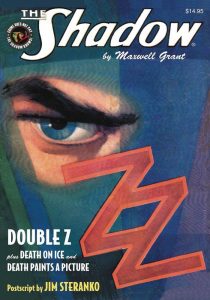 During the summer of 2006, Sanctum Books — originally in association with Nostalgia Ventures — began to reprint The Shadow’s pulp adventures as trade paperbacks. Their first volume featured Lester Dent’s “The Golden Vulture,” the author’s sole contribution to The Shadow series. By the end of 2020, Sanctum had published all but three of The Shadow’s original adventures.
During the summer of 2006, Sanctum Books — originally in association with Nostalgia Ventures — began to reprint The Shadow’s pulp adventures as trade paperbacks. Their first volume featured Lester Dent’s “The Golden Vulture,” the author’s sole contribution to The Shadow series. By the end of 2020, Sanctum had published all but three of The Shadow’s original adventures.
In addition to books, radio, and film, the Shadow has also made an indelible mark in the graphic format. While the Columbia Pictures movie serial of 1940 was still playing in theaters, Street & Smith premiered SHADOW COMICS. Doc Savage — another Street & Smith pulp hero — was also featured in the comic book’s early issues. SHADOW COMICS lasted until August 1949, running for a total of 101 issues. From 1940 – 1942, the character also appeared in a newspaper strip written by Walter Gibson and illustrated by Vernon Greene.
In 1964, Archie Comics premiered a new comic book series featuring the Street & Smith pulp hero. Although The Shadow wears his familiar cloak and slouch hat on the cover to the first issue, later numbers feature him in superhero garb. Interestingly, Jerry Siegel, one of the creators of Superman, wrote the final five numbers of the eight-issue series.
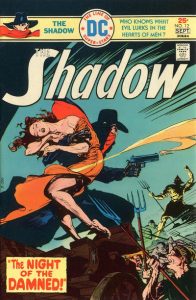 In the fall of 1973, DC Comics introduced perhaps the most highly regarded of all comic books featuring The Shadow. Created by Dennis O’Neil, the comic introduced artist Mike Kaluta’s version of The Dark Knight. Unfortunately, the DC comic book lasted a mere twelve issues. The company would try again in 1986 with Howard Chaykin updating the character to modern times. DC would give the character another go-round with THE SHADOW STRIKES, created by writer Gerard Jones and artist Eduardo Barreto. The series returned the character to the 1930s and ran for thirty-one issues.
In the fall of 1973, DC Comics introduced perhaps the most highly regarded of all comic books featuring The Shadow. Created by Dennis O’Neil, the comic introduced artist Mike Kaluta’s version of The Dark Knight. Unfortunately, the DC comic book lasted a mere twelve issues. The company would try again in 1986 with Howard Chaykin updating the character to modern times. DC would give the character another go-round with THE SHADOW STRIKES, created by writer Gerard Jones and artist Eduardo Barreto. The series returned the character to the 1930s and ran for thirty-one issues.
In 2012, Dynamite Entertainment began publishing a new Shadow comic book. Written by Garth Ennis, Chris Roberson, and others, the series was set in the 1930s. Alex Ross contributed many covers to the series, including the classic depiction of the character that heads our post on the magazine’s first issue. The series ran until 2014, with a special issue published in 2015.
Dynamite also published a ten-issue miniseries in 2013-14. Written by Matt Wagner, it’s one of the best comic book versions of Walter Gibson’s creation. Wagner also wrote two other series featuring The Dark Knight, including THE DEATH OF MARGO LANE, published in 2016.
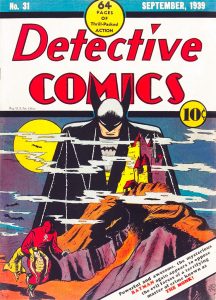 Although The Shadow has a lengthy history in the four-color medium, the character’s importance to the world of comic books is better reflected by its influence on the medium’s writers and artists. Many early creators of superhero comics were devoted readers of THE SHADOW MAGAZINE. These included Bill Finger, Bob Kane, Jack Kirby, Stan Lee, and Jerry Siegel.
Although The Shadow has a lengthy history in the four-color medium, the character’s importance to the world of comic books is better reflected by its influence on the medium’s writers and artists. Many early creators of superhero comics were devoted readers of THE SHADOW MAGAZINE. These included Bill Finger, Bob Kane, Jack Kirby, Stan Lee, and Jerry Siegel.
As demonstrated above, The Shadow has been inspiring all sorts of creators for ninety years. On Thursday, August 19, join PulpFest 2021 and Jim Beard for “The Shadow — Multimedia Hero,” a look at The Shadow’s imposing presence in American popular culture. Our presentation will take place at the DoubleTree by Hilton Hotel Pittsburgh – Cranberry, beginning at 10 PM.
Jim Beard became a published author when he sold a story to DC Comics in 2002. Since that time he’s written official Star Wars and Ghostbusters comic book stories and contributed articles and essays to several volumes of comic book history. His prose work includes the novella KOLCHAK: THE LAST TEMPTATION; co-editing and contributing to PLANET OF THE APES: TALES FROM THE FORBIDDEN ZONE; a story for X-FILES: SECRET AGENDAS; three books of essays on the 1966 Batman TV series; the SGT. JANUS occult detective series of novels; MONSTER EARTH, a shared-world giant monster anthology series; and CAPTAIN ACTION: RIDDLE OF THE GLOWING MEN, the first pulp prose novel based on the classic 1960s action figure. Jim also currently provides regular content for marvel.com, the official Marvel Comics website.
Look for Jim on Amazon at www.amazon.com/author/jimbeard, on Facebook at www.facebook.com/thebeardjimbeard, and on Twitter at @writerjimbeard.
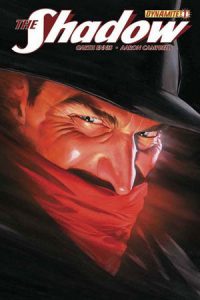 The general public is welcome to attend our evening programming events. To learn more about our programming schedule, please click the Programming button at the top of this page.
The general public is welcome to attend our evening programming events. To learn more about our programming schedule, please click the Programming button at the top of this page.
For those who also want to enjoy our dealers’ room, you can join PulpFest by clicking the Registration button at the top of this page. And don’t forget to book a room at the DoubleTree. They’re going fast!
Alex Ross painted the cover art for THE SHADOW #1, published by Dynamite Entertainment and dated April 2012. You’ll also find the cover pictured below.
A bit older, the cover art for the April 1931 issue of THE SHADOW — painted by Modest Stein — originally appeared on the October 1, 1919 issue of THE THRILL BOOK. Planning to publish THE SHADOW: A DETECTIVE MAGAZINE just long enough to establish a trademark on the character, Street & Smith recycled an old cover for the first issue of their new single-character pulp.
Unfortunately, the artist who painted THE INVISIBLE AVENGER movie poster is not known to us. However, George Rozen created the painting used as the cover for THE SHADOW #141, published by Sanctum Books in April 2019. The artwork was originally used on THE SHADOW DETECTIVE MONTHLY for June 1932, published by Street & Smith.
DC Comics series from 1973 – 1975 is considered by many to be the best of all comic books featuring The Shadow. Created by Dennis O’Neil, the comic introduced artist Michael Kaluta’s version of The Dark Avenger. Unfortunately, the DC comic book lasted a mere twelve issues. Pictured here is the twelfth and final issue — dated August/September 1975 — featuring cover art by Michael Kaluta.
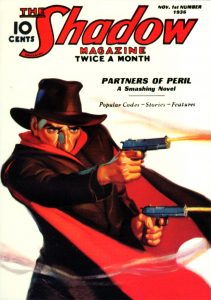 Bob Kane’s Batman — as depicted on DETECTIVE COMICS #31, dated September 1939 — is remindful of the looming headshots found on Standard Magazine’s THE PHANTOM DETECTIVE. The Batarang and the Batgyro made their first appearances in this issue, featuring a villain known as The Monk.
Bob Kane’s Batman — as depicted on DETECTIVE COMICS #31, dated September 1939 — is remindful of the looming headshots found on Standard Magazine’s THE PHANTOM DETECTIVE. The Batarang and the Batgyro made their first appearances in this issue, featuring a villain known as The Monk.
In the first volume of THE STERANKO HISTORY OF COMICS, Batman co-creator Bill Finger admitted, “My first (Batman) script was a take-off on a Shadow story . . . I patterned my style of writing Batman after the Shadow . . . . It was completely pulp style.” Pulp historians Will Murray and Anthony Tollin have surmised that Finger was talking about the Theodore Tinsley Shadow novel, “Partners in Peril.” It originally ran in the November 1, 1936 issue of THE SHADOW MAGAZINE.
The Shadow continues to influence creators to this very day. Hachette’s Grand Central Publishing will soon be releasing the first book in a new series of original novels featuring The Shadow. David Patterson — the author of nearly 150 novels since 1976, including a record-setting 67 NEW YORK TIMES #1 best-sellers — is collaborating with Brian Sitts to bring this legendary character to life in the modern age. Watch for THE SHADOW, coming to your favorite bookseller in July.
To learn more about the influence of The Shadow, please visit the PulpFest Instagram page. A few years back, we ran an extensive series on the character and its influence on popular culture.

